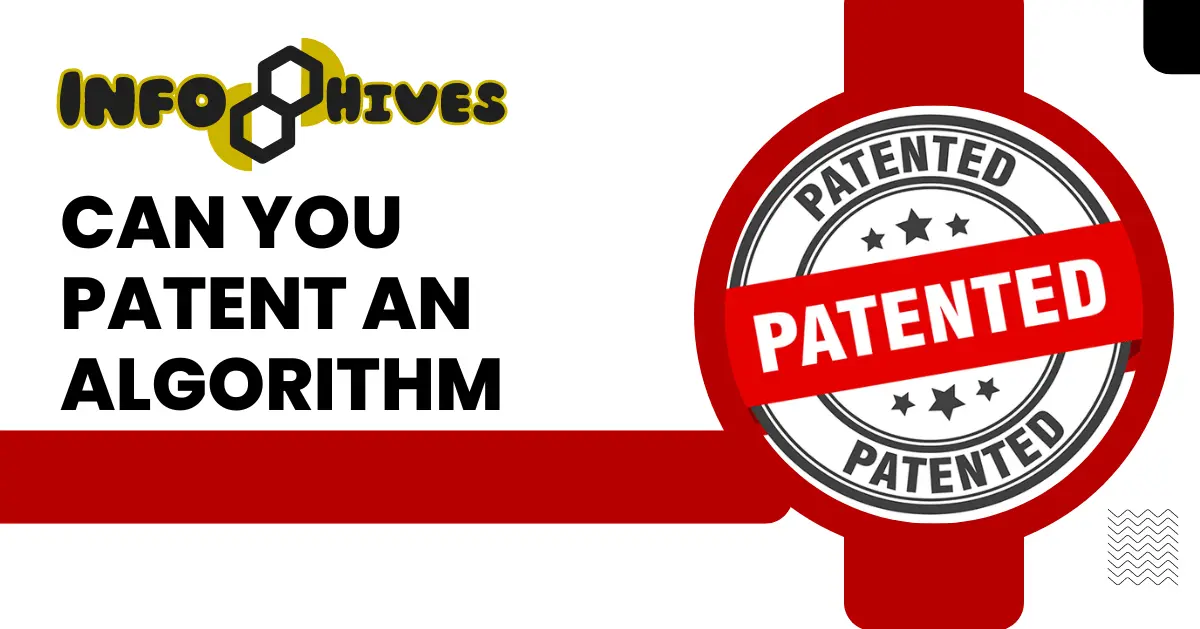Algorithms are step-by-step instructions for solving problems or performing tasks. They are essential in technology because they power everything from search engines to artificial intelligence. Algorithms help computers process data, make decisions, and improve efficiency. As technology advances, algorithms become more complex and valuable.
Patenting algorithms is important for protecting intellectual property. When inventors patent their algorithms, they secure exclusive rights to their inventions. This protection encourages innovation by allowing creators to benefit financially from their work. It also helps businesses avoid legal issues and competition from similar products.
Table of Contents
Patent Eligibility for Algorithms
To patent an algorithm, it must meet specific legal requirements outlined by patent laws. The first criterion is that the algorithm must be considered patentable subject matter. In many jurisdictions, mathematical formulas and abstract ideas, such as algorithms, are not patentable unless they are applied in a practical way. This means the algorithm should be connected to a specific application or technology that offers a tangible benefit. For example, an algorithm that optimizes a manufacturing process may be patentable, while one that merely solves a mathematical problem in isolation may not be.
Another critical requirement is novelty. This means that the algorithm must be new and not previously disclosed to the public in any form. If the algorithm has been published, used, or even discussed publicly, it may no longer be considered novel. Inventors should conduct thorough research to ensure their algorithm has not been previously patented or publicly disclosed. This step is crucial because failing to establish novelty can lead to rejection during the patent application process.
Non-obviousness is another important criterion. An algorithm must not be an obvious improvement over existing solutions to someone skilled in the relevant field. This means that if the algorithm can be easily deduced or developed by someone familiar with the prior art, it may not qualify for a patent. Establishing non-obviousness often requires demonstrating that the algorithm solves a problem in a way that is not straightforward or that it offers a unique advantage over existing methods.
Challenges in Patenting Algorithms
Legal Ambiguity
Patenting algorithms is tricky because the laws are not always clear. Many places, like the United States, have strict rules on what can be patented. If an algorithm is seen as just an abstract idea or a math concept, it might not be allowed. Inventors need to show that their algorithm is tied to a real-world application. Otherwise, their patent request might be denied.
Proving Novelty and Non-Obviousness
Another challenge is showing that the algorithm is new and not obvious. Technology is always changing, and many algorithms can look similar to existing ones. To prove that an algorithm is unique, inventors must research existing patents and technologies. This can take a lot of time and money. If the algorithm is too similar to others, it may not qualify for a patent.
Lengthy Patent Process
The process of getting a patent can take a long time. Once an application is submitted, it might take months or even years to get a decision. During this time, inventors may feel unsure about their rights. There’s also the risk of legal battles if someone challenges the patent. This can make the process even more costly and stressful.
Ethical Concerns
There are also ethical concerns about patenting algorithms, especially in areas like artificial intelligence. Some people worry that patents could slow down innovation or make important technologies harder to access. This creates a tough balance between protecting ideas and encouraging progress. Inventors must consider these issues when deciding to patent their algorithms.
Best Practices for Patent Applications
When applying for a patent, it’s crucial to clearly define how your algorithm is applied in a specific technology or process. Avoid presenting the algorithm as just a series of abstract steps. Instead, explain how it solves a real-world problem or improves a particular technology. This helps establish that your algorithm is more than just a mathematical concept and meets the criteria for patentable subject matter.
Provide Detailed Descriptions
Your patent application should include a detailed and thorough description of the algorithm. This means explaining how it works, what makes it unique, and how it differs from existing solutions. Include diagrams, flowcharts, and specific examples to make your explanation as clear as possible. A well-documented application not only strengthens your case for novelty and non-obviousness but also makes it easier for the patent office to understand the value of your invention.
Focus on the Claims Section
The claims section of your patent application is where you define the scope of your patent protection. Write your claims carefully and clearly to cover all aspects of your algorithm that you want to protect. Make sure to include both broad and specific claims. Broad claims cover the general concept, while specific claims protect particular features or implementations. This approach ensures that your algorithm is well-protected against potential infringements.
Conduct a Thorough Prior Art Search
Before submitting your patent application, conduct a thorough search of existing patents and publications. This helps you identify any similar algorithms that might already exist. By understanding what’s already out there, you can better position your algorithm as a novel and non-obvious invention. This step is essential in avoiding rejection and strengthening your patent application.
Alternatives to Patenting Algorithms
Trade Secrets
One alternative to patenting algorithms is protecting them as trade secrets. A trade secret is any information that provides a business with a competitive edge and is kept confidential. By keeping an algorithm as a trade secret, you avoid the public disclosure required in the patent process. However, maintaining secrecy can be challenging, as it requires strong security measures and employee agreements. If the secret is leaked or independently discovered, you may lose your competitive advantage without legal recourse.
Copyright Protection
Copyright is another option, though it’s more limited. While copyright protects the code or expression of an algorithm, it does not protect the underlying method or concept. This means that someone could develop a different version of the algorithm without infringing on your copyright. Copyright protection is easier and less costly to obtain than a patent, and it automatically applies as soon as the work is created. However, its scope is narrower, making it less effective for protecting innovative algorithms.
Licensing
Licensing is another strategy for monetizing an algorithm without seeking a patent. By licensing your algorithm, you grant others the right to use it under specific conditions, typically in exchange for royalties or fees. This approach allows you to retain ownership of the algorithm while still benefiting from its use by others. Licensing can be flexible, with terms tailored to different markets or applications, but it requires careful contract management to protect your interests.
Open Source
Releasing an algorithm as open source is a completely different approach. By making your algorithm publicly available, you allow anyone to use, modify, and distribute it. While this means giving up exclusive rights, it can lead to widespread adoption and collaboration, potentially boosting your reputation and leading to other business opportunities. Open source can also be a strategic choice if you want to set a standard in the industry or build a community around your technology.
FAQs
How do I install a website blocker plugin in Chrome?
You can install a website blocker plugin from the Chrome Web Store. Just search for a blocker, click “Add to Chrome,” and follow the prompts to install it.
Can I block specific websites at certain times?
Yes, many website blocker plugins allow you to set schedules. You can choose specific times or days to block certain websites, helping you stay focused.
Is it possible to unblock a website once it’s blocked?
Yes, you can easily unblock a website by going into the plugin’s settings. Find the list of blocked sites and remove the ones you want to unblock.
Will the website blocker work in Incognito mode?
Most website blocker plugins have an option to work in Incognito mode. You need to enable this in the plugin’s settings for it to block sites in Incognito.
Can I use a website blocker plugin on multiple devices?
Some plugins allow syncing across devices if you’re signed into Chrome with the same account. This way, your blocked sites list stays consistent on all your devices.
Conclusion
Website blocker plugins for Chrome are powerful tools that help you stay focused and manage your online time better. By blocking distracting websites, these plugins can improve your productivity and keep you on track with your tasks. They are easy to install and use, with features that let you customize which sites to block and when.
Whether you need to limit social media use, block certain sites for your children, or just create a more focused work environment, a website blocker plugin can be a simple solution. With the ability to schedule blocks and even use them in Incognito mode, these plugins offer flexibility to suit different needs.



